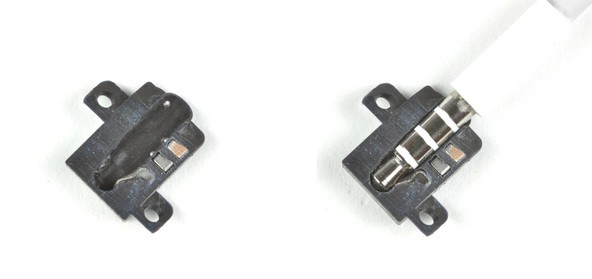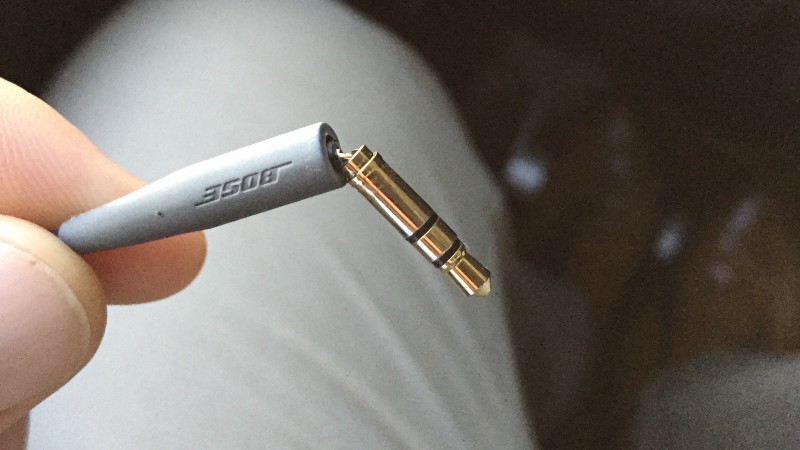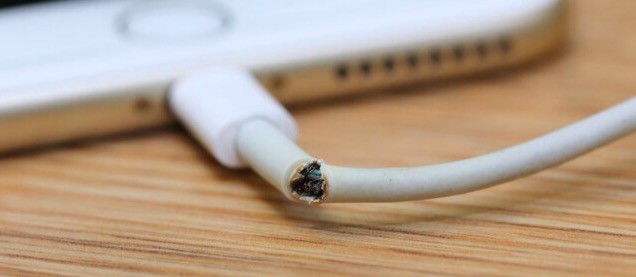Apple Shouldn’t Kill the Headphone Jack
The 3.5mm audio connector is not the new floppy disk
The next iPhone will not have a headphone jack, Bloomberg reported today.
I am very sad to hear this news. In all of tech, we have only one cheap, open, ubiquitous, small, sufficient, and reliable interface. There’s no reason to replace it right now.
On the Verge, Nilay Patel wrote about why this is a bad idea. John Gruber responded, waving his hands and saying, “Apple knows best.”
Gruber compares this decision to Apple’s past decisions, especially their choice to ship the iMac without a floppy disk drive. This is a mistake. The headphone jack is not comparable to the floppy drive for several reasons. Coincidentally, these are the reasons we should be disappointed Apple is removing the 3.5mm audio port much too soon:
It’s small.
I’ll defer to Gruber here:
As an aside, whatever the merits of this decision, it’s not about device thinness. The iPhone 6 is the thinnest iPhone to date at 6.9mm. The iPod Touch has a headphone jack and is just 6.1mm thick. The iPod Nano: 5.4mm. The analog headphone jack is more costly in terms of depth than thickness.Lightning and Bluetooth are smaller on the device, but they move the bulk to the headphones themselves. Lightning requires a chip built into the cable which prevents it from shrinking much more (also, the flat interface of Lightning prevents the cable from rotating, an issue when your headphones become coiled). Bluetooth requires batteries and many chips.
The 3.5mm jack is small and direct. Analog audio is output directly so cables can be simple and dumb.
Floppy disks and drives were large. The drive took up a significant percentage of a computer’s volume. The storage limitations of the disks required us to carry binders or cases full of them. New file sharing and storage formats — the Internet, USB drives, and writable CDs — improved on the floppy disk and drive’s overal size and storage density in every way.
It’s open.
The 3.5mm jack is over 100 years old. It has no licensing fees. You don’t have to pay anyone to use it. Companies voluntarily participate in the standard so people can freely use it to transmit audio.
The 3.5mm jack is a dumb interface. No signal needs to be decoded, audio is transferred through the line openly. Devices which use the standard can be cheap. No computer chips are needed, so the signal cannot be manipulated or ensnared by DRM. If headphones fit in the port, audio will come out.
Patel covers DRM briefly, to which Gruber claims it’s not about DRM:
Patel misses the bigger problem. It’s not enforcement of DRM on audio playback. It’s enforcement of the MFi Program for certifying hardware that uses the Lightning port. Right now any headphone maker in the world can make any headphones they want for the standard jack. Not so with the Lightning port.First off, that sounds like a great reason to not use the Lightning port.
Second, I’d bet money DRM will arrive quickly. Consider the only other accidental open standard we use: the screenshot.
Update: Not anymore! With iOS 10, Apple has applied screenshot restrictions throughout the operating system to protect video content. If you screenshot Netflix or HBO Go on iOS 10 you end up with a black image. Same goes for iTunes movies (behavior that has been on MacOS for some time). We have no reason to believe Apple won’t apply similar mechanisms to audio content as well.
It’s cheap.
There’s no chips to buy or licensing fees to pay, so 3.5mm components are astoundingly cheap. Here are the newer six-pin jacks for $0.08 each, $0.02 if you buy in bulk. Cables are similarly priced.
It’s ubiquitous.
Because it’s cheap and open, it’s propagated wildly. Every audio device I own has a 3.5mm port. So does my car. So does the plane I was on yesterday. (And on that plane they handed out headphones for free).
The floppy drive — despite being present on all our computers — was hardly ubquitous. The number of PC in use when the iMac was launched was peanuts when compared to the number of smartphones, cars, TVs, music devices, planes, and more which feature the 3.5mm jack.
It’s reliable.
Since the move to the pin-model (as seen in Apple’s newest iteration, pictured below), 3.5mm headphone jacks have been durable and reliable. The jack isn’t noisy and generally doesn’t fail.
You still run across the occasional older ‘prong’ models, where contact was made with the plug by a bent metal conductor. These fail much more often (see: JetBlue’s older planes) but can thankfully be fixed for cheap.
 Photo by iFixit.
Photo by iFixit.
Further, the 3.5mm isn’t just reliable in the long term, it’s reliable in every instance of use. The same can’t be said for Bluetooth, which seems to unpair once a week.
The 3.5mm jack does fail commonly in one regard:
 But, this isn’t unique to the 3.5mm:
But, this isn’t unique to the 3.5mm:
 This will occur at a higher rate once we start using this port while we walk around.
This will occur at a higher rate once we start using this port while we walk around.
Unlike the 3.5mm, the floppy disk was fragile and unreliable. It was a mechanical medium, a thin piece of film spinning in a brittle plastic shell. What replaced the floppy was more durable in nearly (CD scratches, anyone) every way.
It’s sufficient.
Consider all the reasons listed above. There are many cases where a successful replacement technology is more expensive, less reliable, larger, and/or more restrictive. BluRay, for example, failed many of the metrics above when compared to DVD. But BluRay delivered much higher quality videos, so we gladly paid more for new drives, new disks, slow menus, and more restrictive DRM.
Now consider this: the 3.5mm jack is capable of transferring higher quality sounds than humans can discern.
Bluetooth audio is detectibly worse than 3.5mm headphones. True, Lightning is capable of transferring digital signals, but all this does is move the analogue conversion closer to the speaker.
In exchange for adopting a more expensive, more controlled, less reliable, and less supported interface we are given equal or worse audio.
So why is Apple removing the headphone port?
It seems to me that Apple is favoring strategy over users. That strategy is one of making thinner, simpler devices with fewer moving pieces.
There’s service benefits to this strategy. Less ports mean less breakage and less vectors for water to seep into the device. Perhaps there is an equation somewhere, which tells Apple that the number of phones they’ll replace will drop significantly without the 3.5mm port.
There’s power benefits to this strategy as well. Smaller components mean more room for batteries, as we’ll see in the next watch.
But there’s also the brand and design components of this strategy. As Gruber argued, removing the headphone jack is something Apple would do. This is the flaw in Gruber’s argument, that past behavior is reason enough, even when considering all the negatives.
But what if this is the argument internally as well? What if Apple is making decisions not by design, but by inertia? “It’s something similar to what we’ve done before, therefore we will.” This might even explain their recent negotiation issues.
That is frightening.
Either way: I’m looking forward to seeing the Apple apologists explain this decision if the device ships with the current earbuds and an adaptor dongle.
